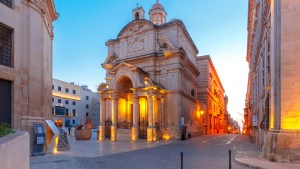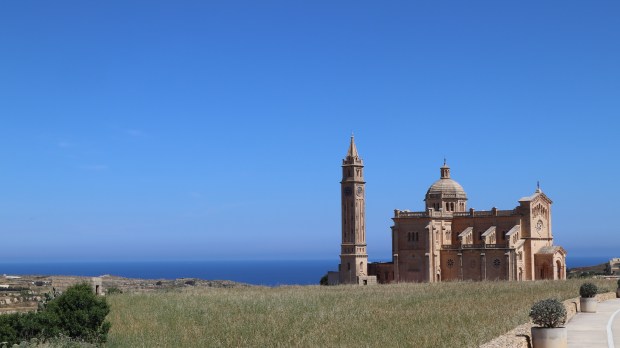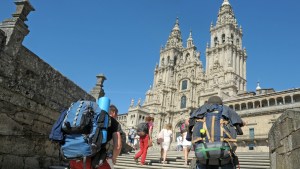Pilgrimage holds a significant place in the Bible – in fact, it can be considered its central, neural concern. The concept is deeply rooted in the narratives and teachings of the Hebrew Bible and the New Testament. From the Israelites’ exodus from Egypt to the journeys of the early Christian disciples and Apostles registered in the Book of Acts, pilgrimage is intertwined with themes of faith, contemplation, obedience to one’s calling, and spiritual transformation.
Exploring the biblical notions of pilgrimage reveals a profound theology behind the journey, emphasizing the connection between physical movement and the inner pilgrimage of the heart.
One of the foundational biblical stories that encapsulates the essence of pilgrimage is the exodus of the Israelites from Egypt. Christian traditions have read this narrative as portraying human beings as exiles in an often-inhospitable world, estranged both from God and from one another, and highlight this being-exiled as a constitutive attribute of existence.
Pilgrimages are, both metaphorically and spiritually, ways to undo said exile, as if walking back home. The Book of Exodus recounts how God led the Israelites out of slavery, guiding them through the wilderness, towards the Holy Land. This transformative expedition is marked by actual physical movement, as the Israelites embark on a pilgrimage towards their new home. However, the exodus is not merely a physical migration; it is a profound spiritual passage towards liberation and covenantal relationship with God.
The exodus narrative illustrates that pilgrimage is not solely about reaching a physical destination but rather about the transformative process that takes place along the way. The Israelites’ exodus through the wilderness becomes a testing ground for their faith and reliance on God’s provision. It is then when they redefine their identity as God’s people, learning to trust in His guidance and care. The pilgrimage becomes an opportunity to deepen their relationship with God, to shed the bondage of their past, and to embrace their new identity as a liberated people.
The theology behind pilgrimage is intricately tied to the concept of seeking God and His presence. In the Psalms, pilgrimage is depicted as a longing for communion with God, and a desire to find His dwelling place. Psalm 84 beautifully captures this sentiment, declaring, “How lovely is your dwelling place, Lord Almighty! My soul yearns, even faints, for the courts of the Lord” (Psalm 84, 1-2). The act of pilgrimage is an expression of this thirst, a deliberate journey towards encountering God and experiencing His presence.
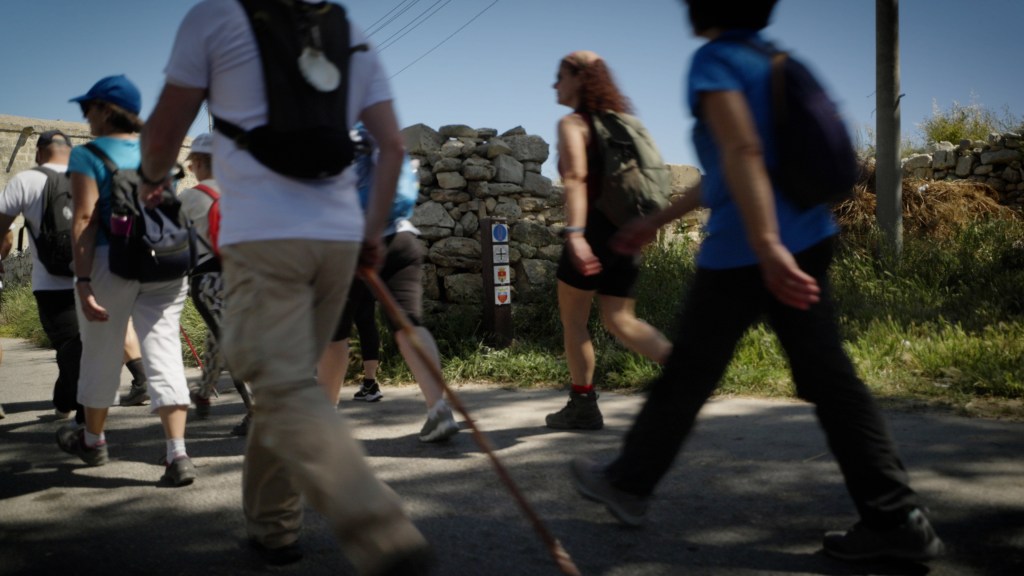
Furthermore, pilgrimage in the New Testament takes on new dimensions with the life and teachings of Jesus Christ. Jesus Himself embarked on several significant journeys, including his pilgrimage to Jerusalem for the Passover and his subsequent crucifixion and resurrection. The disciples, following Jesus’ example, embarked on missionary trips, spreading the message of the Gospel and establishing Christian communities.
One of these early disciples, Paul himself, shipwrecked off the northwestern coast of Malta and spent the unnavigable winter months there. During his stay, he converted the island’s governor, Publius (Malta’s first bishop and first saint), healed the sick and won souls for Christ, establishing the very roots of Maltese Christianity.
The theology of pilgrimage in the New Testament extends beyond physical movement to encompass the inner journey of faith and discipleship. It involves following Jesus, taking up one’s cross, and surrendering to His transformative work in one’s life. As Jesus states in the gospel of Luke (Cf. Lk 9, 23) “Whoever wants to be my disciple must deny themselves and take up their cross daily and follow me.” Pilgrimage becomes a metaphor for the Christian life, a call to walk in faith, continually seeking a deeper relationship with God.
Nestled in the heart of the Mediterranean, Malta beckons believers from far and wide to embark on this kind of transformative itinerary.
Indeed, Malta offers a profound spiritual journey unlike any other. From its ancient catacombs and pilgrimage caminos to the enduring traditions of St. Paul’s Shipwreck, from its magnificent baroque cathedrals to ancient Byzantine cave churches that bear witness to its 2,000-year uninterrupted Christian heritage, the landscape (and the soundscape, composed of constant birdsong and sea breeze) of the archipelago surely lends itself to contemplation.
If it is true, like Augustine and other Christian philosophers claimed, that one can get a glimpse of God’s perfection by looking at the many beauties of creation, Malta could be a kind of amusement park for contemplatives: The archipelago offers exceptional sandy beaches, cliffs rising sharply from its pristine waters, impressive natural grottoes, and lush green valleys alike. It is a destination that ignites the soul and nourishes the spirit.
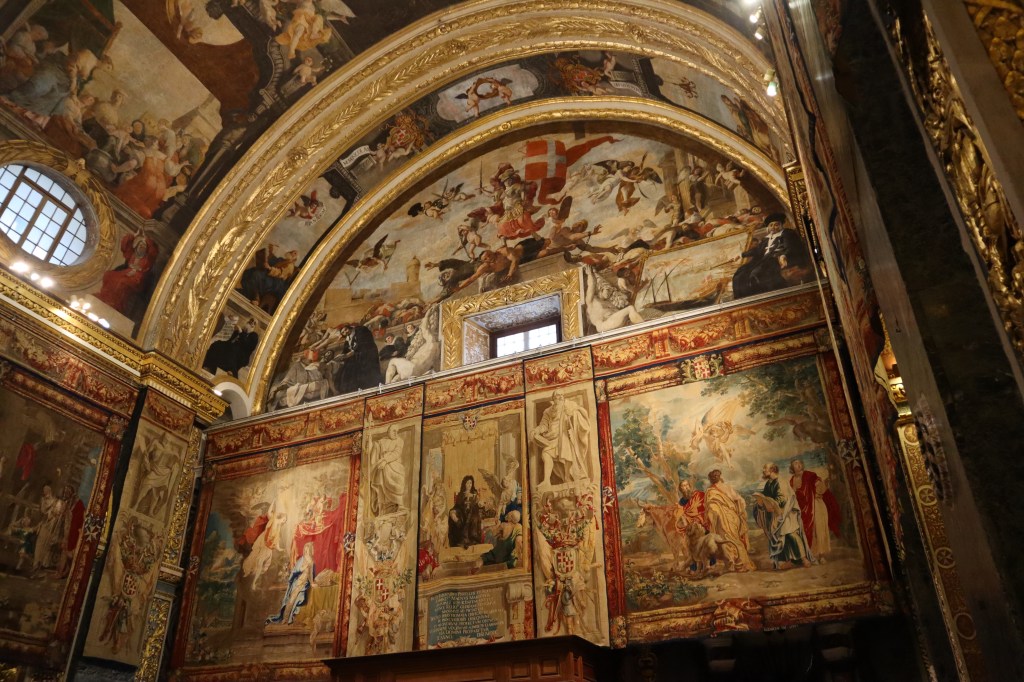
Pilgrimages allow believers to embark on a physical and spiritual journey to a sacred place associated with religious events, lives of saints, relics, or early places of worship. In Malta, all of these come together seamlessly. In the archipelago, the concept of pilgrimage comes alive as pilgrims step foot on this sacred land, immersing themselves in a spiritual tapestry that has been woven across millennia.
Descend beneath the surface of Malta, and a hidden treasure awaits: the ancient catacombs. Carved into the limestone by early Christian communities, these subterranean burial chambers offer pilgrims a unique space for contemplation and meditation. The dimly lit passages, adorned with intricate burial niches, evoke a sense of awe and reverence, connecting pilgrims to the faith of those who once worshipped in these hallowed halls. As they wander through these catacombs, pilgrims gain a profound appreciation for the enduring legacy of Christianity and the unwavering devotion of early believers. In fact, these catacombs-hypogea are the most important ones outside of Rome, and are part of one of Malta’s most important pilgrimage Caminos: the Universal Peace Walk, the Pro Pace Universali camino, instituted by Bishop Domenico Cubelles as early as in 1543.
Traversing the pilgrimage caminos and religious routes of Malta is an invitation to embark on a voyage of spiritual discovery. In total, there are (for now) six different pilgrimages caminos – one of them being part of the legendary Way of Saint James: being a maritime hub, Malta was also inadvertently a place of transit for pilgrims, including those going to the Holy Land and to Compostela, Rome, or elsewhere.
These paths guide pilgrims through the islands’ diverse landscapes, from rolling hills to villages and cities, through rugged coastlines and serene countryside dotted with ancient chapels everywhere you look. Indeed, each step becomes an act of devotion, a way to connect with God and others, while deepening one’s spiritual journey. Along these caminos, pilgrims encounter breathtaking vistas, testimonies of ancient Christian communities, and sacred spaces that inspire introspection, contemplation, and adoration. The footsteps they follow echo the pilgrims of centuries past, Saint Paul himself included, infusing the journey with a sense of collective pilgrimage and a shared spiritual heritage.
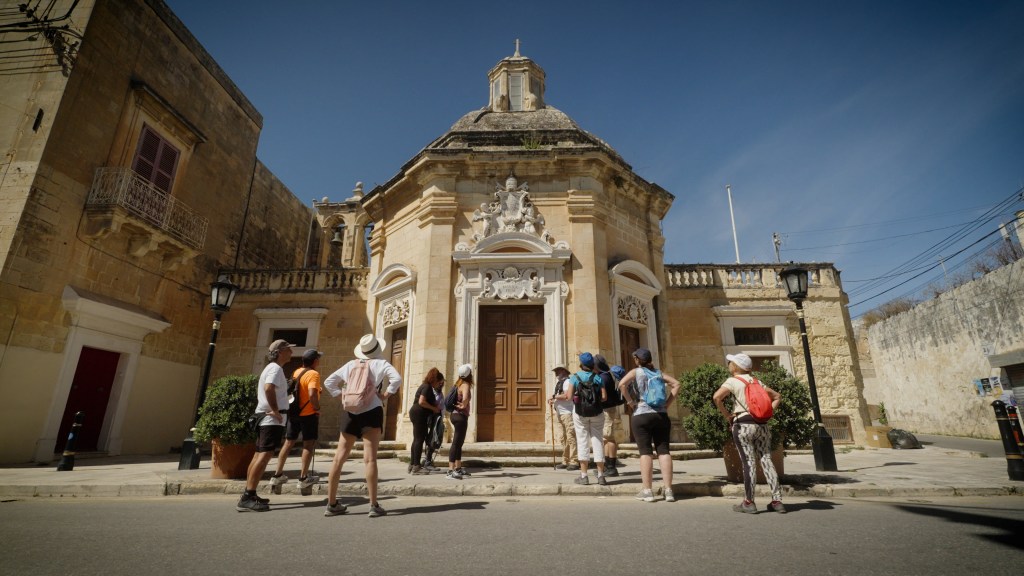
The story of St. Paul’s Shipwreck resonates deeply throughout Malta. According to the Acts of the Apostles, the apostle found refuge on the island after his shipwreck. The grotto where he sought shelter has become a place of pilgrimage, where believers can reflect on Paul’s unwavering faith, draw inspiration from his resilience in the face of adversity, and learn from the unusual kindness the Maltese showed Paul, as Luke himself noted in the book of Acts (Cf. Acts 28, 1-10).
Standing in the grotto, pilgrims can literally walk on Paul’s footsteps and feel some of the strength he derived from his relationship with God. This sacred site serves as a reminder that even during life’s storms, a shared faith can be an anchor, providing solace, hope, and friendship. Maltese hospitality is a living testimony to this shared faith.
As pilgrims traverse Malta, the skyline is adorned with a plethora of churches, chapels, and shrines – each a testament to the archipelago’s deep-rooted Christian heritage. From the awe-inspiring St. John’s Co-Cathedral in Valetta (probably the most impressive baroque building in the world) to the peacefully majestic Basilica of Ta’ Pinu in Gozo, these architectural marvels invite pilgrims to enter and experience moments of profound spiritual connection. Within the walls of these sacred spaces, elaborate frescoes, intricate sculptures, and stunning stained glass windows breathe life into the stories of faith. As pilgrims immerse themselves in the ambiance of these churches, they are transported to a realm of reverence and devotion – one that the locals are deeply proud of: Malta is indeed the most Catholic country in the world (after the Vatican, that is).
The artistry and craftsmanship displayed in these sanctuaries (from Mattia Preti and Giuseppe Cali to Caravaggio himself) become a visual representation of the profound love and devotion that believers have offered to their faith throughout the centuries. The little church of the Immaculate Conception of Sarria deserves a special mention, being the only church in the world designed by maestro Mattia Preti.
Malta is one of the oldest Christian communities in the world – as ancient as those of Ephesus, Jerusalem, Corinth, and Rome itself. The archipelago’s enduring faith is deeply ingrained in its cultural fabric, evident in the religious festivals, traditions, and devotional practices that have been passed down through generations. It even shapes its cuisine.
As pilgrims step foot on Maltese soil, they become part of this living legacy, immersed in a vibrant tapestry of faith and devotion. These Maltese Christian traditions serve as a guiding light, offering a sense of continuity and connection with the larger global Christian community. Pilgrims can witness firsthand the living expressions of this tradition through their encounters with the local faithful, the participation in religious rituals, sharing meals, and engaging with the islands’ (seemingly infinite) spiritual landmarks.
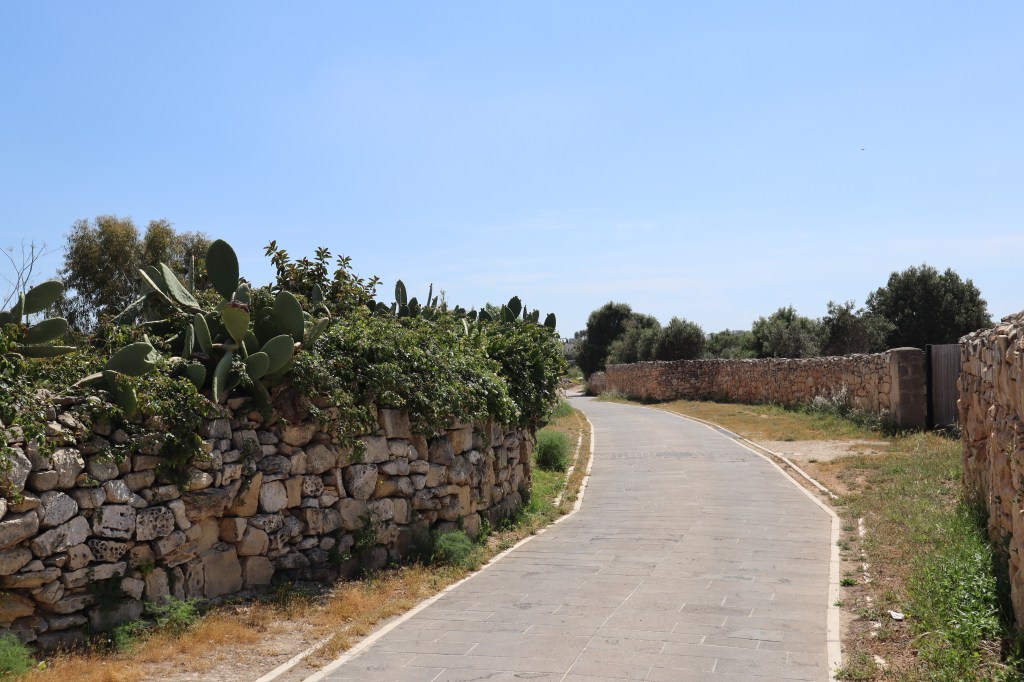
In short, a pilgrimage to Malta is a sacred sojourn that allows believers to delve into the depths of their faith. Through the catacombs, pilgrims connect with the devotion of early Christians. Along the pilgrimage caminos, they embark on a journey of self-discovery and spiritual transformation. St. Paul’s Shipwreck inspires resilience and faith in the face of adversity, and the beauty and generosity of Maltese proverbial hospitality. The churches, with their architectural splendor or their sober simplicity, offer sanctuaries for reflection and reverence. And Malta’s ancient Christian tradition envelops pilgrims in a living legacy that connects them to the roots of their faith.
In Malta, believers find themselves on a spiritual journey that rejuvenates their faith, deepens their connection with the divine, and allows them to be part of a timeless narrative of Christian devotion.
Interested? We help individuals or groups to walk the Caminos. Please contact us on information@XirCammini.org or via WhatsApp on +35679046942. XirCammini is a not-for-profit organisation dedicated to developing, maintaining and walking historical, faith-related walks in Malta, and elsewhere in Europe. We are registered as a Voluntary Organisation (VO1646) with the Office of the Commissioner for Voluntary Organisations, Malta.
This content has been brought to you in partnership with the Malta Tourism Authority
